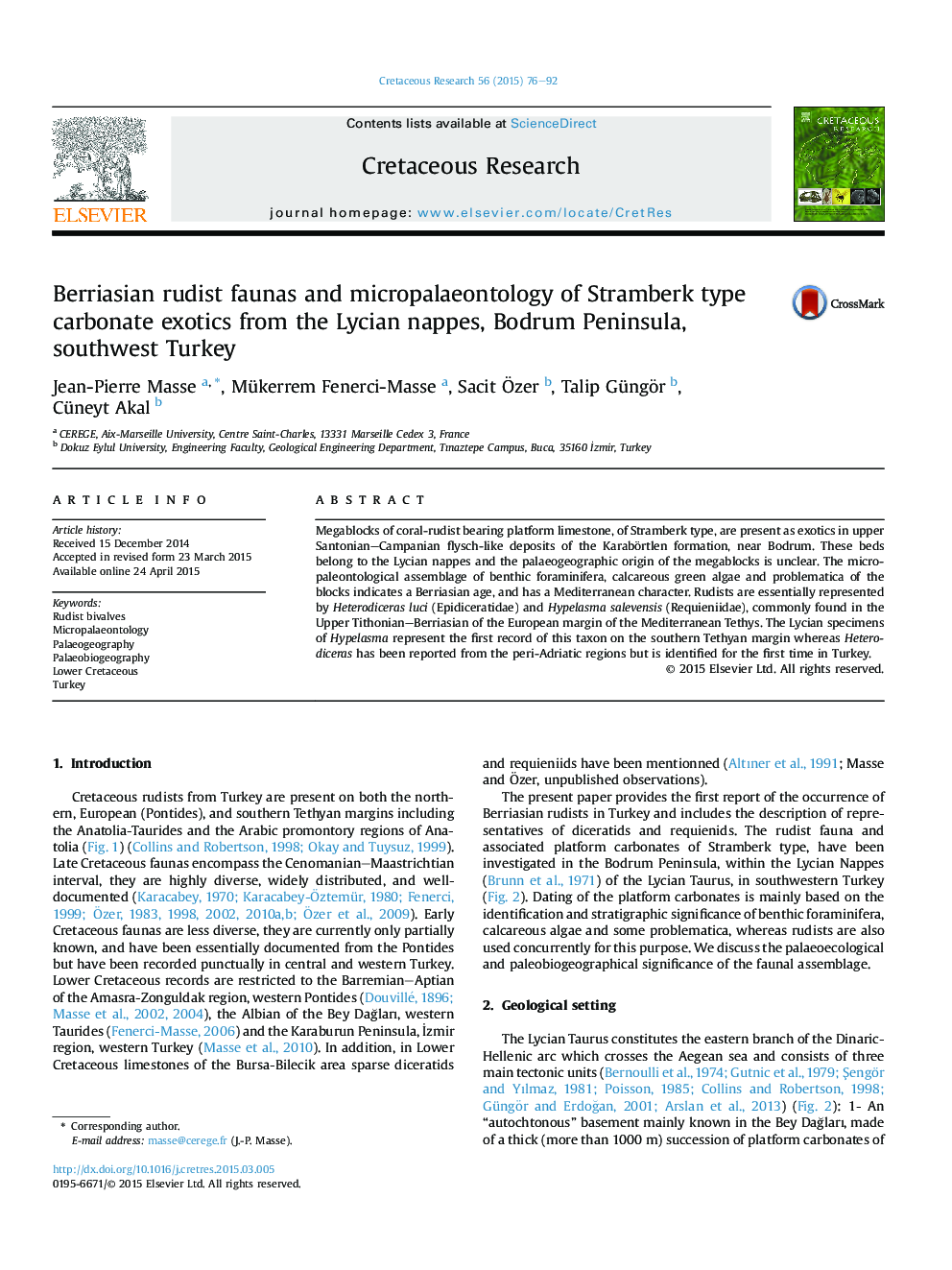| Article ID | Journal | Published Year | Pages | File Type |
|---|---|---|---|---|
| 4746926 | Cretaceous Research | 2015 | 17 Pages |
•Megablocks of Stramberk type carbonates are present in the late Cretaceous flysch of the Lycian nappes of SW Turkey.•Their micropaleontological assemblage documents a Berriasian age.•Heterodiceras luci and Hypelasma salvensis, typical Tithonian-Berriasian rudists are identified for the first time in Turkey.
Megablocks of coral-rudist bearing platform limestone, of Stramberk type, are present as exotics in upper Santonian–Campanian flysch-like deposits of the Karabörtlen formation, near Bodrum. These beds belong to the Lycian nappes and the palaeogeographic origin of the megablocks is unclear. The micropaleontological assemblage of benthic foraminifera, calcareous green algae and problematica of the blocks indicates a Berriasian age, and has a Mediterranean character. Rudists are essentially represented by Heterodiceras luci (Epidiceratidae) and Hypelasma salevensis (Requieniidae), commonly found in the Upper Tithonian–Berriasian of the European margin of the Mediterranean Tethys. The Lycian specimens of Hypelasma represent the first record of this taxon on the southern Tethyan margin whereas Heterodiceras has been reported from the peri-Adriatic regions but is identified for the first time in Turkey.
